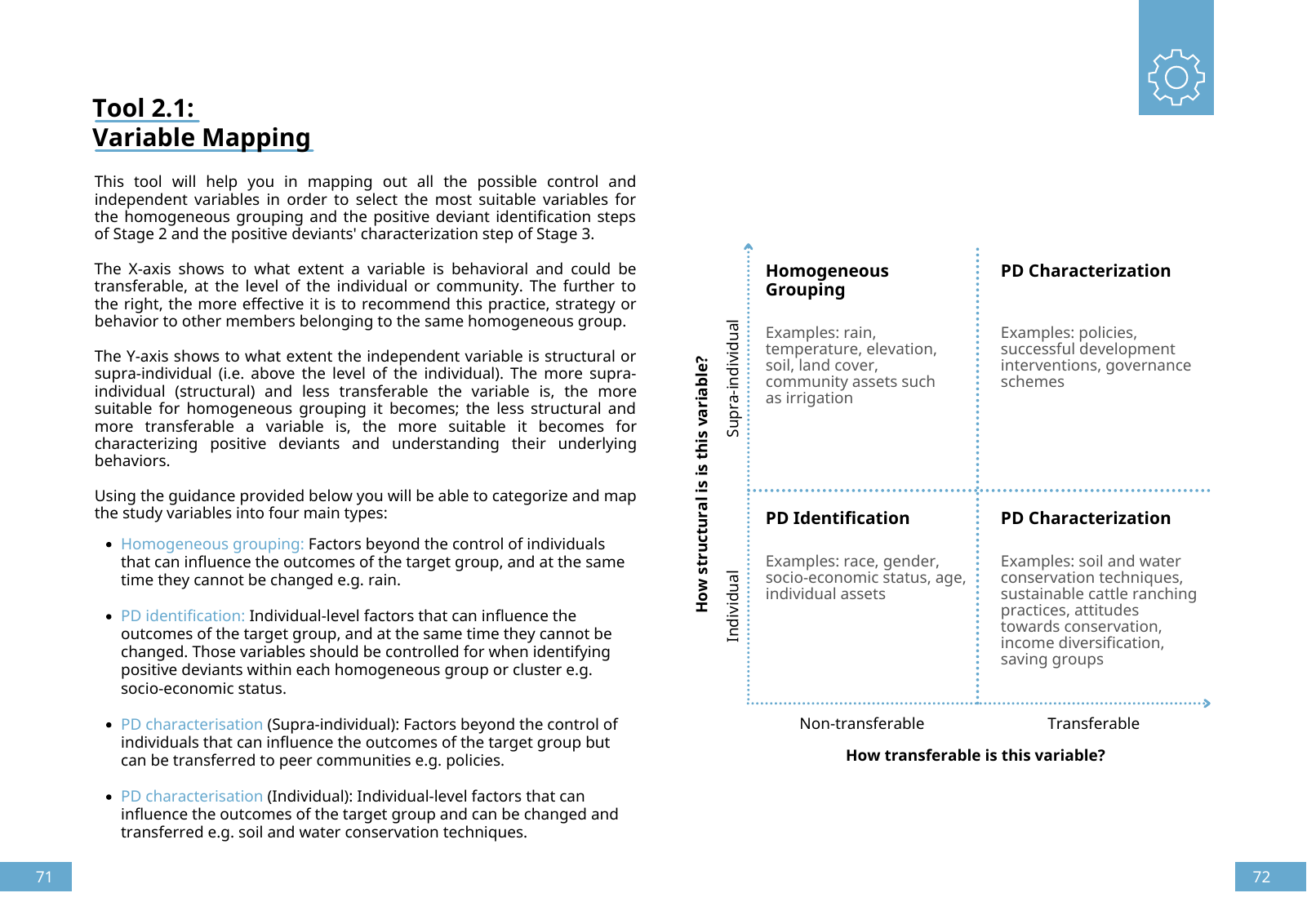Tool 2 1 Variable Mapping This tool will help you in mapping out all the possible control and independent variables in order to select the most suitable variables for the homogeneous grouping and the positive deviant identification steps of Stage 2 and the positive deviants characterization step of Stage 3 The X axis shows to what extent a variable is behavioral and could be transferable at the level of the individual or community The further to the right the more effective it is to recommend this practice strategy or behavior to other members belonging to the same homogeneous group The Y axis shows to what extent the independent variable is structural or supra individual i e above the level of the individual The more supra individual structural and less transferable the variable is the more suitable for homogeneous grouping it becomes the less structural and more transferable a variable is the more suitable it becomes for characterizing positive deviants and understanding their underlying behaviors Using the guidance provided below you will be able to categorize and map the study variables into four main types Homogeneous grouping Factors beyond the control of individuals that can influence the outcomes of the target group and at the same time they cannot be changed e g rain PD identification Individual level factors that can influence the outcomes of the target group and at the same time they cannot be changed Those variables should be controlled for when identifying positive deviants within each homogeneous group or cluster e g socio economic status PD characterisation Supra individual Factors beyond the control of individuals that can influence the outcomes of the target group but can be transferred to peer communities e g policies PD characterisation Individual Individual level factors that can influence the outcomes of the target group and can be changed and transferred e g soil and water conservation techniques In di vi du al Non transferable Transferable Su pr a in di vi du al Homogeneous Grouping PD Identification PD Characterization PD Characterization Examples rain temperature elevation soil land cover community assets such as irrigation Examples race gender socio economic status age individual assets Examples soil and water conservation techniques sustainable cattle ranching practices attitudes towards conservation income diversification saving groups Examples policies successful development interventions governance schemes 71 72 How transferable is this variable H ow s tr u ct u ra l i s is t h is v ar ia b le

Hinweis: Dies ist eine maschinenlesbare No-Flash Ansicht.
Klicken Sie hier um zur Online-Version zu gelangen.
Klicken Sie hier um zur Online-Version zu gelangen.